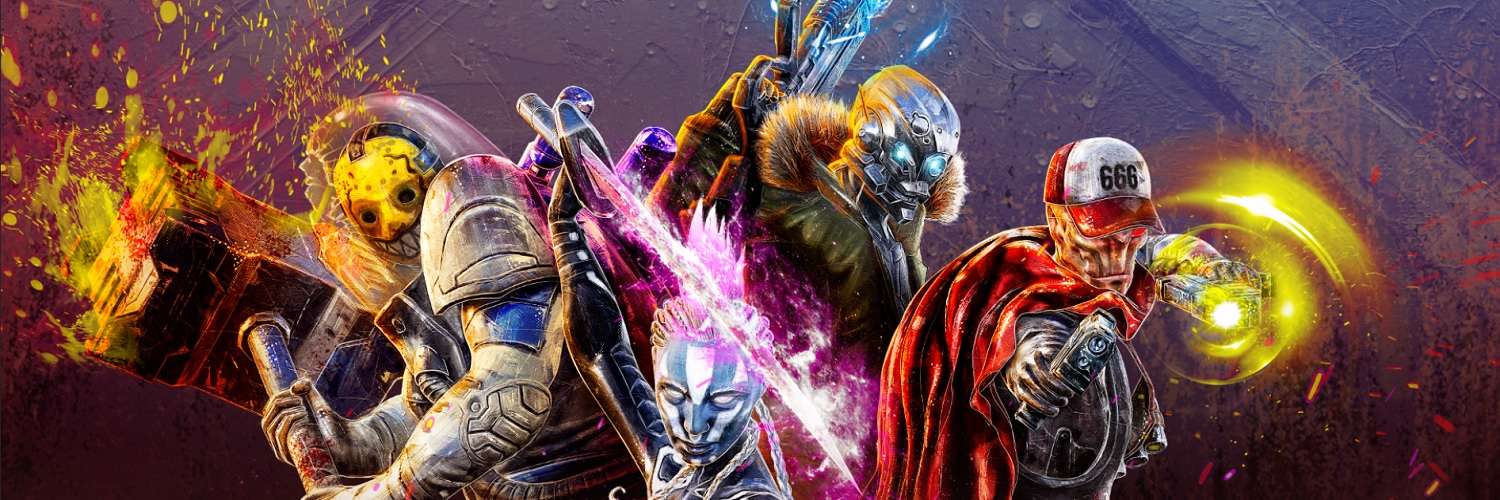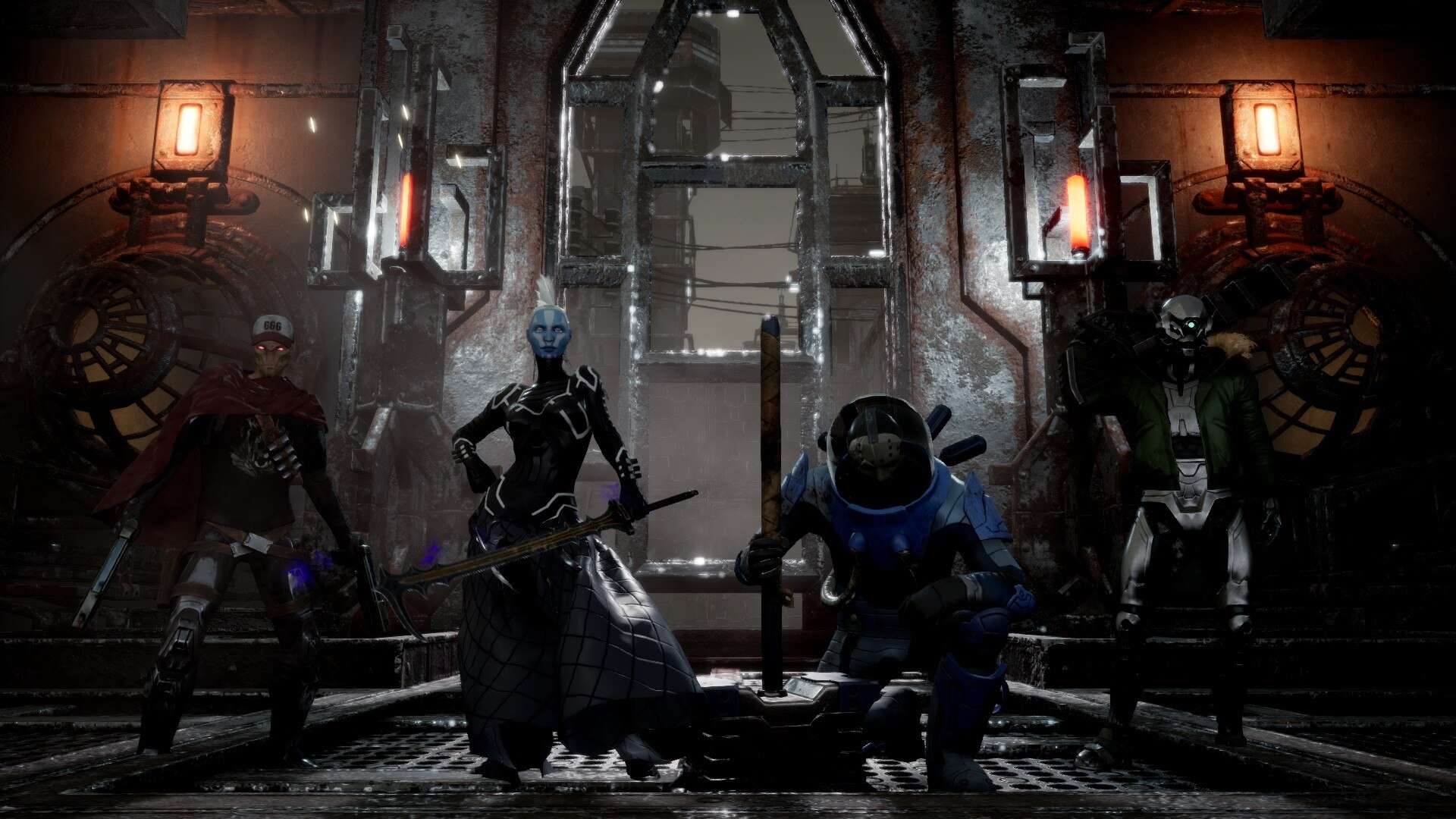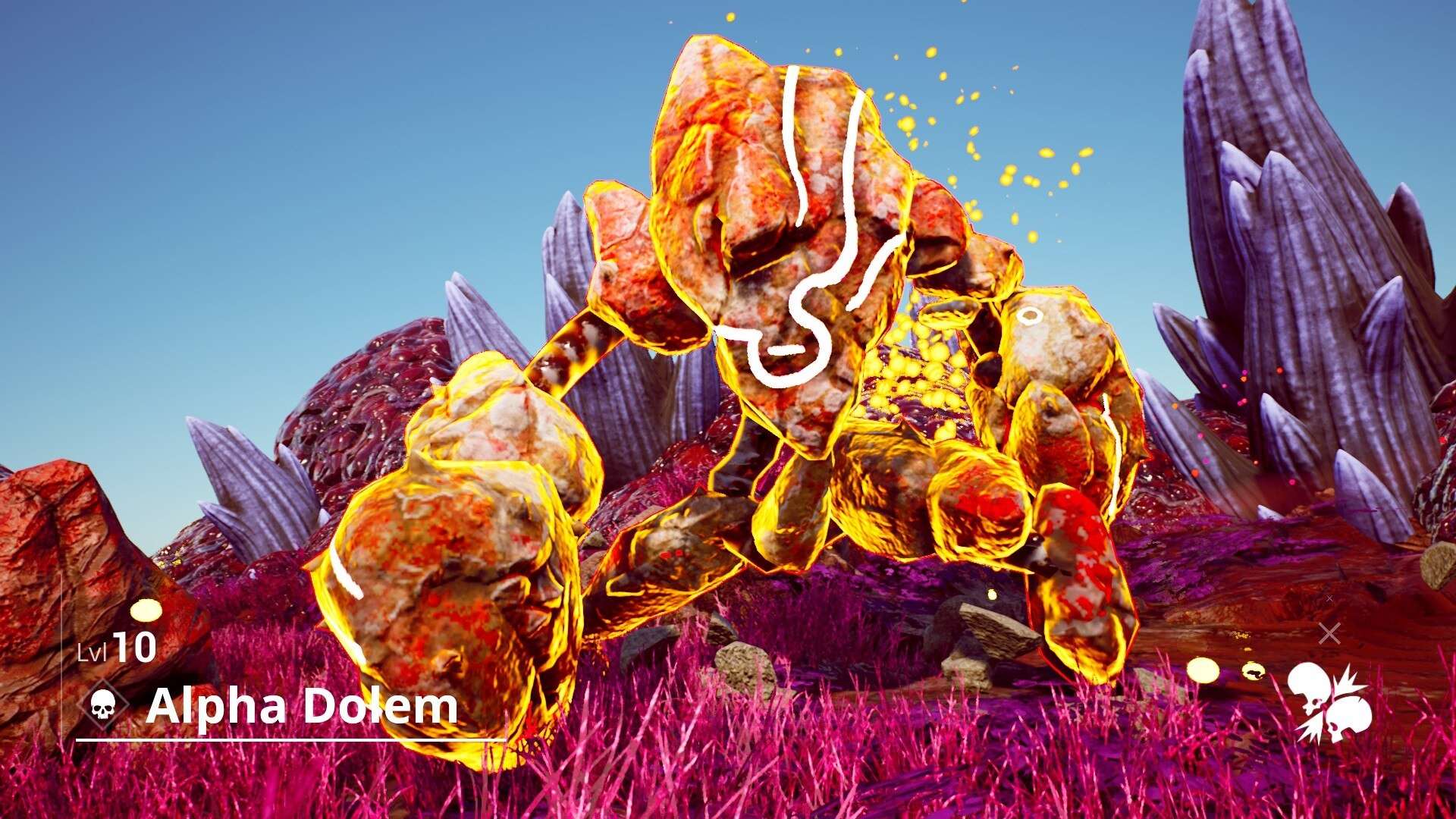
Killsquad PC Review
What happens when people who are fans of twin-stick shooters, hack and slash games, and like action RPGs, are developing a game? Something similar to Killsquad I would imagine. The developers, Novarama, whose name might ring bells for people who are fans of Invizimals, might not have given this game an original name, but this self-explanatory title is one that tells you exactly what you will be getting into. Killsquad is a cooperative action game for up to four players that takes elements from action RPGs and throws controls from the mentioned genres. Killsquad has been in Steam Early Access for over two years (released July 2019) and is now ready to drop version 1.0 to the market for everyone to play.
Killsquad slots right into the whole sci-fi space bounty idea. The setup is that the player takes over as one of five bounty hunters, who form a killsquad for the Wahla Corporation, a business not shy of taking on contracts that no others will do. Momma is the top dog in command, offering contracts to the killsquad to accomplish in exchange for all the loot and fame that comes with successfully completing such bounties. Aliens, federations, plagues, and even gods, stand in the way of a successful mission. The story most likely will not interest many. It sets the atmosphere, the general tone and feel of the game, and about does its job informing what is going on in each contract, but it is rather generic. The world-building is done through some decent voice acting that is bespoke to each contract, as Momma chats to the team during their mission. I lost interest in the latter part of the game and just wanted to blast more foes, which thankfully, there are no interruptions to the gameplay while the dialogue is on screen.

There are five bounty hunters to pick from, which are basically the game’s take on a class system. The characters are bespoke and cannot share anything with each other, as they all have their own weapons, gear, skills, and level system. Troy is a dual pistol gunslinger with high ranged damage, while Zero, another ranged character, uses energy rifles and focuses more on the healing. On melee are Kosmos and Cass, covering quick and slow melee approaches to combat, with one using a giant two-handed hammer/axe and another using swords. The last character, one that was recently added earlier in the year during an Early Access update, is Ekaar, an alien creature dubbed the Prodigy Engineer, who uses shotguns for basic attacks and drones that can be commanded to perform actions.
Elaborating on their play styles is the abilities that each character has. A character has access to a small skill tree where their core abilities sit and branch out to additional skills that can modify the base kit in exchange for taking up points. A character cannot have more than ten points worth of modifiers active at one time, so the player has to find what suits their playstyle and enable those. Take my main bounty hunter, Troy, as an example. Troy has skills that mark enemies and locks onto them, a strong shot to push enemies away, and a card throw that can do single high damage to an enemy (he’s a gambler, so has an obsession with cards). Each hunter has the option of three different ultimate abilities to use. In Troy’s case, this is a very gun kata/Reaper from Overwatch influenced area of effect damage where he spins around blasting his pistols in all directions. His other two ultimate attacks enable clones to fight with him or a gravity shot that attracts foes to it. Unlike the normal skills, which are always active, only one ultimate can be equipped. The obvious one for Troy seems to be the area of effect damage, just for how handy it is at clearing rooms, and also, it can be modified to heal based on how much damage it does.

One downfall to having everything specific to characters is that they become a rather singular experience. There are not enough skills available to offer vastly different builds, and while some of the alterations to skills are impactful, I feel that going in strong with the action RPG element of this title would have added some depth to each character. Instead, what is here is a tiny range of skills with three or so modifications to them, rather than a larger set of that could lead to many different play styles, maybe even allow different skills to be switched in and out rather than buffing the base ability kit.
Also adding to the problem of having this singular experience is their lock to a single weapon type. Troy can only use dual pistols, and so his base attack is always blasting two guns. Loot plays an important part in improving stats, which is rated with a vector score, similar to Destiny‘s light level, to get across how powerful a character is. As new loot is found, well I should say bought because there is a weapon or two for rewards, and maybe one found in a chest during a contract, but there is a heavy emphasis on earning money and gaining loot for weapons and other gear from the shop instead, where many variants of gear are stored and can be refreshed after a certain amount of time. This means that the grind becomes more about cash, which is less exciting than discovering new gear to use during a contract.

As new gear is found the vector slowly goes up, but because weapons are always the same type for the bounty hunter, the general gameplay on a character becomes stale over time. The weapons do get additional buffs that can be added by crafting loot materials, such as exploding enemies on death or slowing them down, but the core remains similar. It would have been nice, for example, Troy could use other small guns that altered his default attack somewhat, maybe some laser beam pistols or maybe gun blades that added in the ability for melee damage and shooting at the same time, just something to alter the attack. Switching characters helps mitigate breaking up the flow, but because each one has its own progression, it would mean building their level and vector up by replaying older contracts, but since these contracts do not seem to be randomised it ends up being repetitive.
It does not matter which character is selected, nor does it matter if they are melee or ranged based, the basic controls are the same and are built around twin-stick mechanics, meaning one for moving and one for aiming. This translates well to a controller, but it should be known that using a mouse and keyboard works fantastic too, so there is no downside to using one or the other, so it is down to the preference of the player. Movement of the character is done with WASD/Left Stick, while aiming is done with the mouse/right stick. The mouse is tracked by the player model and has a mouse indicator on-screen to help aim. Using a stick does not have this, since aiming is based on the position of the right stick itself and will shoot automatically when tilted in a direction, while the left mouse button needs to be held to attack. Skills and dodge are assigned to buttons, and two basic weapons can be equipped, which are switched with a click of a button. Weapon switching is vital, due to the inclusion of elements (fire, toxic, electric, etc.), which can deal additional damage or be a hindrance if the foe is strong against a certain element, so there is some need for awareness of what is going on with the enemies.
Contracts are split into difficulty tiers (recruit, veteran and spec-ops), with contracts in each slowly requiring higher vector requirements. A character does not need to meet the requirement, but it will be harder to survive the challenge if not accomplished enough. Contracts are mostly around killing bosses, but they do throw in some other mission types, such as defending a transport carrier, or even a few puzzles for the player to solve along the way. I was worried about the grind because halfway through the campaign, there is a jump in vector difficulty, but a new variant of mission types, called Plague, adjust existing boss fight contracts into harder variants. Plague is a way to throw in mutators into a contract, such as having to stay away from teammates otherwise you inflict damage to each other, enemies always explode on death or enemies have shields. Plague variants add a new coat of paint to old contracts, helping fight off repetition with the grind.
An interesting design choice is that every contract has the player starting at level one, with kills increasing experience until a maximum level ten. This is linked to the skills and modifiers assigned from the skill tree, as these become active once a certain level is hit – e.g. ultimate attack becomes available at level six. It reminds me of something like Heroes of the Storm, and other MOBAs. Does it add to the game? Well, it means that each contract is spaced as such as level one enemies appear in the beginning and by the end, the level ten boss and enemies are in the mix, and the flow mostly sits in line with the player’s level, rarely would you be a level or two ahead of the enemies unless every area of the level was traversed. It also means early on the player must be mindful that their skills are not available, and so must rely on their basic gear and dodging skills. It is different, but I am not sure if it is better than if a real level-up system was in place.

Grabbing a few friends is totally recommended. Killsquad works fine solo, but it feels it carters towards at least having two to four players involved. There is a lot of foes to take down and it can be easy to be overwhelmed on your own. One disappointment, which isn’t exactly the game’s fault, is there are hardly any players online. I have not seen the game reach over 1,000 players since my week with the title, usually hanging around 400-700, so it can be hard to find a team to join in without organising. There is a chat room, so requests to form a party can be done in there, but if wanting to jump into a mission with random players, then you need to keep an eye on the contract and a party symbol above to say someone is playing this mission. This does not mean they have free slots to join them, as clicking join will create a new hosted contract if it cannot fit your team into the other party’s game. No quick play exists, which is a shame, as a quick play option would be nice to include as a way to find games fast, and you could simply filter on vector levels so that the team is around your gear rating.
There is currently no end game element, so once the last mission is done, you can feel complete, which makes it come across more like a traditional twin-stick shooter than an action RPG. The developers are bringing a new mode called “Inferno Mode”, which will be the end game cycle that players who go for the best gear will love to have included. The developers have also committed to seasonal events and other updates further into the future, so at the moment there is a chance the game will slowly grow a player base over time, especially when it hits consoles next year and crossplay is included.
Unreal Engine is the engine of choice for Novarama, and due to that, the game looks great from its isometric viewpoint. It does not require high-end hardware to run respectably, so something like an Nvidia GTX 970 can produce a solid frame rate with high settings. That said, there are some issues with crashes in the game where it will just crash at the end of a level, just as a boss is defeated, which does not lose the progression, as the game seems to save, but any loot cannot be claimed, which sucks. I am not sure what is causing this, but other people on Steam have also had similar issues and think it is due to memory leaks. Hopefully, this will be patched soon, because it is an issue that spoils an otherwise solid presented video game.
Killsquad is a good attempt at merging a few ideas from other genres and coming up with an arcade-style isometric shooter with a loot grind. The action loop is solid, and the high enemy count makes for some frantic action that merges quick ability activation with the player’s own skill. It falls short in some elements, such as no end game content and a loot grind that is too focused on the shop rather than rewards through contracts, and could do with a better diverse set of abilities and weapons for each character. Still, this is a game that is easy to jump into, and even if the end game does not exist, taking the game as an experience from the first to the last contract is good enough to recommend, think of it as an isometric shooter rather than an action RPG. One thing though is that make sure you have yourself a friendly bounty hunter or three to come along with you to get the best experience from this entertaining, blaster action game.
